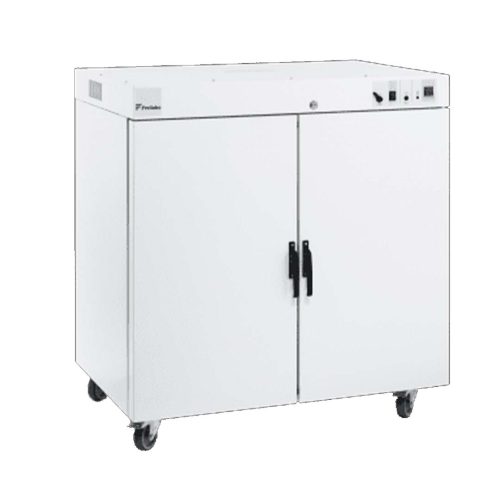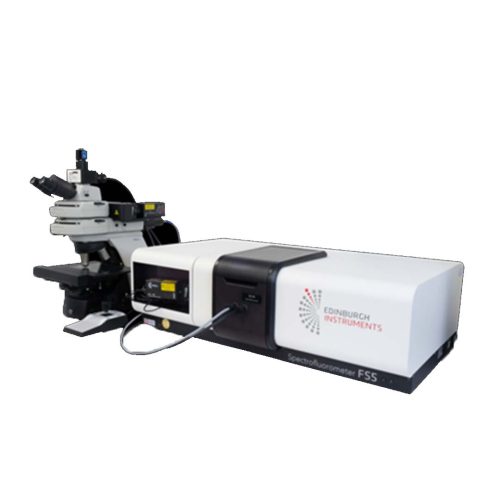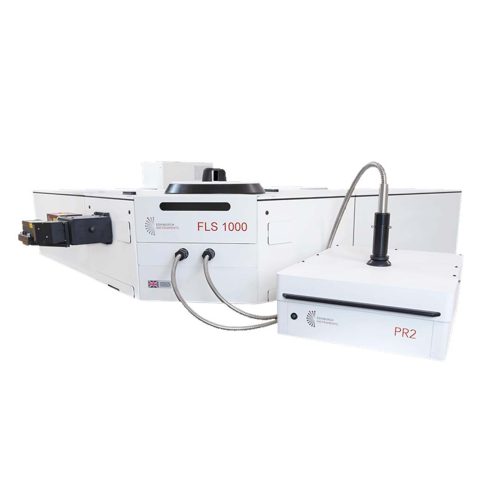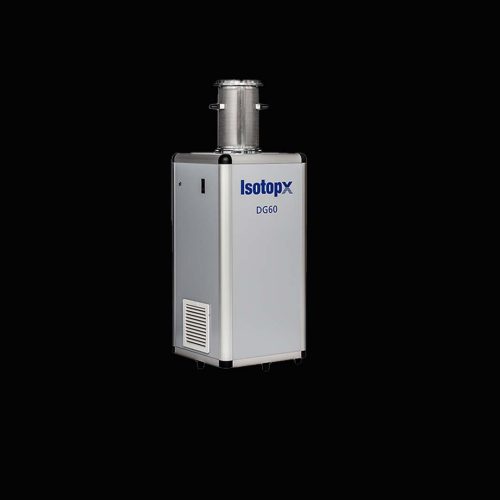Description
The Lifespec II is a compact, fully integrated, high performance, time-correlated single photon counting (TCSPC) fluorescence lifetime spectrometer designed for use with high repetition rate pulsed femtosecond and picosecond lasers. The system is a fully automated solution, combining hardware and software in a single package for fundamental research and routine laboratory applications. Its zero temporal dispersion optics, using double-monochromators in subtractive mode, sets the standard for technical performance in measuring ultra-fast decays.
This is the only turn-key fluorescence lifetime measurement system on the market featuring a subtractive double-monochromator, which provides for zero temporal dispersion and allows the instrument to measure fluorescence lifetimes down to 5 ps with ultrafast lasers.
The powerful F980 software controls all the hardware and also analyses the raw data. With reconvolution, the software can reliably measure fluorescence lifetimes down to a tenth of the instrument response function.
Data acquisition modes range from fluorescence lifetime decay acquisitions and time-resolved spectra to automated time-resolved anisotropy measurements and automated temperature maps. The LifeSpec II in the standard configuration is supplied with one detector, however, additional detectors can be added. The LifeSpec II requires at least one picosecond pulsed diode laser (EPL Series, HPL Series), pulsed LED (EPLED Series), supercontinuum laser or Ti:Sapphire laser (with suitable pulse picker) for operation.
Sample Chamber:
The LifeSpec II has a large sample chamber that enables a variety of sample holder options to be fitted easily. These include single cuvette holders, multiple sample holders, front face film/bulk/powder holders, fibre attachments, thermostated sample holders and cryostats.
Subtractive double monochromator:
Zero temporal dispersion in the optical path is a necessity for precise fluorescence lifetime measurements in the lower picosecond time scale. Conventional monochromators introduce temporal shifts and pulse broadening originating from propagation delays caused by the dimensions of the grating. The new design of the LifeSpec II uses two coupled monochromators with opposite pulse broadening characteristics. This eliminates temporal delays and temporal dispersion and enhances the stray light rejection. In this manner sources of errors in the response of the instrument are reduced and lifetime measurements can be performed and analysed more
accurately.
Computer-controlled polarisers:
Computer Controlled Polarisers Motorised mounts are used both in the excitation beam path and in the emission path to operate the optional Glan Thompson polarisers. An excitation polariser may not be needed if the laser’s emission is naturally polarised, which is the case for Ti:Sapphire and picosecond-pulsed diode lasers. Linearly polarised excitation and emission is a necessity for fluorescence anisotropy measurements. However, even for precise fluorescence decays (energy relaxation), polarisers may be required to eliminate rotational artifacts that are superimposed on the fluorescence decay (“magic angle” measurements).
Fluorescence Lifetime Measurement and analysis capabilities:
DATA ACQUISITION MODES
• Fluorescence Decay Acquisition.
• Time-Resolved Fluorescence Spectra.
• Quasi-Steady State Spectra (with spectral correction).
• Automated Time-Resolved Anisotropy Measurements (with optional polarisers).
• Automated Temperature Maps (with optional cryostat or Peltier cooled sample holder).
DATA ANALYSIS MODE
• 4-exponential fit with background, shift, reconvolution (based on Marquardt Levenberg algorithm).
• Multi-exponential fluorescence anisotropy fits (tail fits only
ADVANCED DATA ANALYSIS (optional)
• 4-exponential fit with background, shift, reconvolution, no initial guesses required (based on propriety algorithm).
• Lifetime Distribution Analysis with a grid of 200 lifetimes and no a priori shapes of the distribution.
• Batch Analysis.
• Global Analysis.
• Förster Kinetics.
• Micellar Quenching Fits.
• Extended Expotential Components Analysis.
• Advanced Fluorescence Anisotropy kinetics with reconvolution.
Fluorescence Lifetime Measurement
The LifeSpec II is perfect for fluorescence lifetime measurement. For further information on the LifeSpecII fluorescence lifetime spectrometer simply contact a member of our sales team at [email protected]. We look forward to being of assistance.







